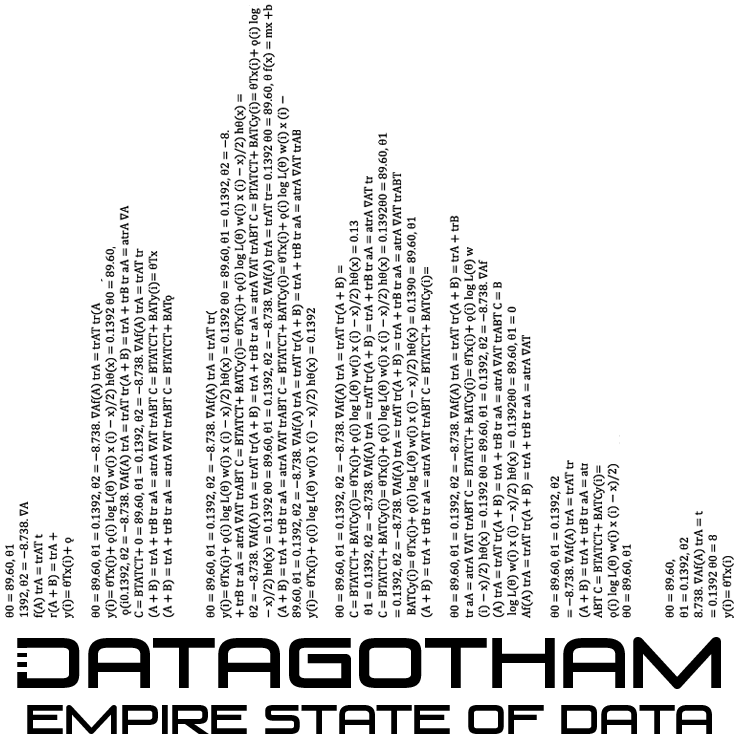The New York City data community is a very jovial and tight-knit community. We go to Meetups together, visit each other at work to talk about projects, and even occasionally take over bars together. This is partly because all of us are crammed on this tiny island with everyone else; but it's mostly due to the effort of a group of extraordinary people from very different backgrounds committed to making NYC a great place to be doing data science.
One of the threads that has consistently come out of conversations I have had with members of the community is the desire to highlight the strength of NYC's data community vis a vis this diversity of backgrounds and interests. For example, while NYC has become a strong geographic complement to Silicon Valley as a hub for technology startups, the data community stretches far beyond the startups.
Many of our traditional stalwart industries; such as finance, entertainment, and media, that have been building sophisticated analytics products and teams for some time, but have only recently started speaking more publicly about these efforts. At the same time, industries with less obvious connections to the data community; such as design, fashion, and non-profits, have thrust themselves into the NYC data community.
All this is to say, we believe that there is something special about New York that makes it a great place to be doing data science. We think and do things differently, and we have a very diverse and unique set of constituencies in the city that have cultivated a special community and culture. So, we want to show everyone just how awesome this community is.
Enter DataGotham: http://datagotham.com
This event is the first of its kind. Rather than focus on the tools and techniques people are using, DataGotham will bring together professionals from across the NYC data community for intense discussion, networking, and sharing of wisdom. The goal is to tell stories about what problems people are solving, and the highs and lows of that process. DataGotham is being organized by Hilary Mason, Mike Dewar, John Myles White, and myself; and will take place September 13th-14th at NYU Stern.
You can check out our great, and ever expanding, speaker list here: http://www.datagotham.com/speakers/. We also have four tutorials running on the afternoon of the 13th, followed by cocktails and The Great Data Extravaganza Show at the Tribeca Rooftop that evening.
Tickets are on sale now, and can be purchased at http://datagotham.eventbrite.com. Also, as a reader of this blog, I would like to offer you a special discount of 25% off registration by using the promo code "dataGothamist" when you register.
We are very excited about the opportunity to provide a platform for this great community, and we would love to see you there!



